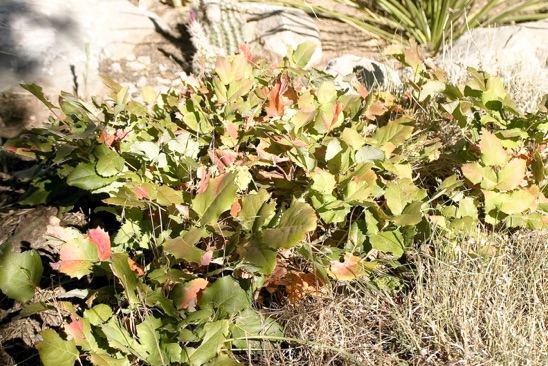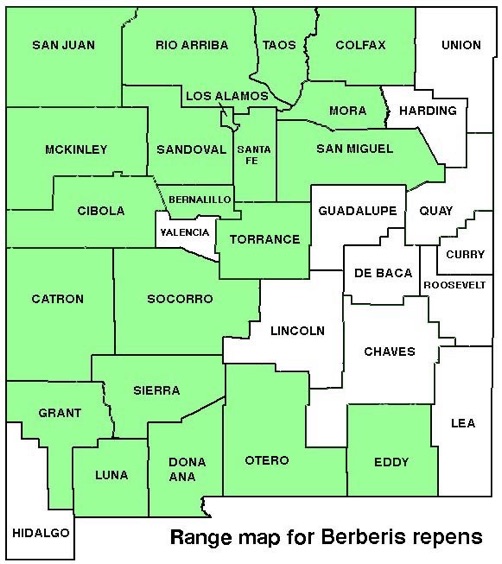WILDFLOWERS OF NEW MEXICO

Usually no more than ankle high with 1–8-inch tall woody stems, this groundcover looks like a discarded holly wreath. The spreading branches have oval, evergreen leaves with prickly margins and clusters of small, yellow flowers followed by blue-black, grape-like fruit.
FLOWERS: April–June. Dense spike-like clusters 1–4-inches long with 25–50 yellow flowers; petals rounded, spreading, 3/16–5/16-inch (5–7 mm) long; fruit a rounded, 1/4-inch diameter (6 mm) berry.
LEAVES: Alternate. Blade odd pinnate with 5–7 opposite leaflets, each oval, 5/8–2 3/4-inches (16–70 mm) long, margins lined with spiny teeth. The evergreen leaves often turn rich shades of red in the fall.
HABITAT: Gravelly, sandy, loam soils; ponderosa-oak woodlands to mixed conifer-aspen forests.
ELEVATION: 6,900–11,200 feet.
RANGE: Common throughout mountainous regions of western U.S., Canada.
SIMILAR SPECIES: Five other barberries native to NM, all with more or less prickly leaves and clusters of yellow flowers, but they’re shrubby with red fruit. Some authors group species with simple, deciduous leaves into Berberis and plants with evergreen, compound leaves into Mahonia.
NM COUNTIES: NM mountains in mid- to high-elevation habitats: Bernalillo, Catron, Cibola, Colfax, Dona Ana, Eddy, Grant, Hidalgo, Los Alamos, Luna, McKinley, Mora, Otero, Rio Arriba, Roosevelt, San Juan, San Miguel, Sandoval, Santa Fe, Sierra, Socorro, Taos, Torrance..

CREEPING BARBERRY, OREGON-GRAPE
BERBERIS REPENS (MAHONIA REPENS)
Barberry Family, Berbericaceae
Perennial, sub-shrub



THE CONTENTS OF THIS WEBSITE ARE COPYRIGHTED AND CANNOT BE USED
WITHOUT PERMISSION OF GEORGE OXFORD MILLER


EMAIL ME